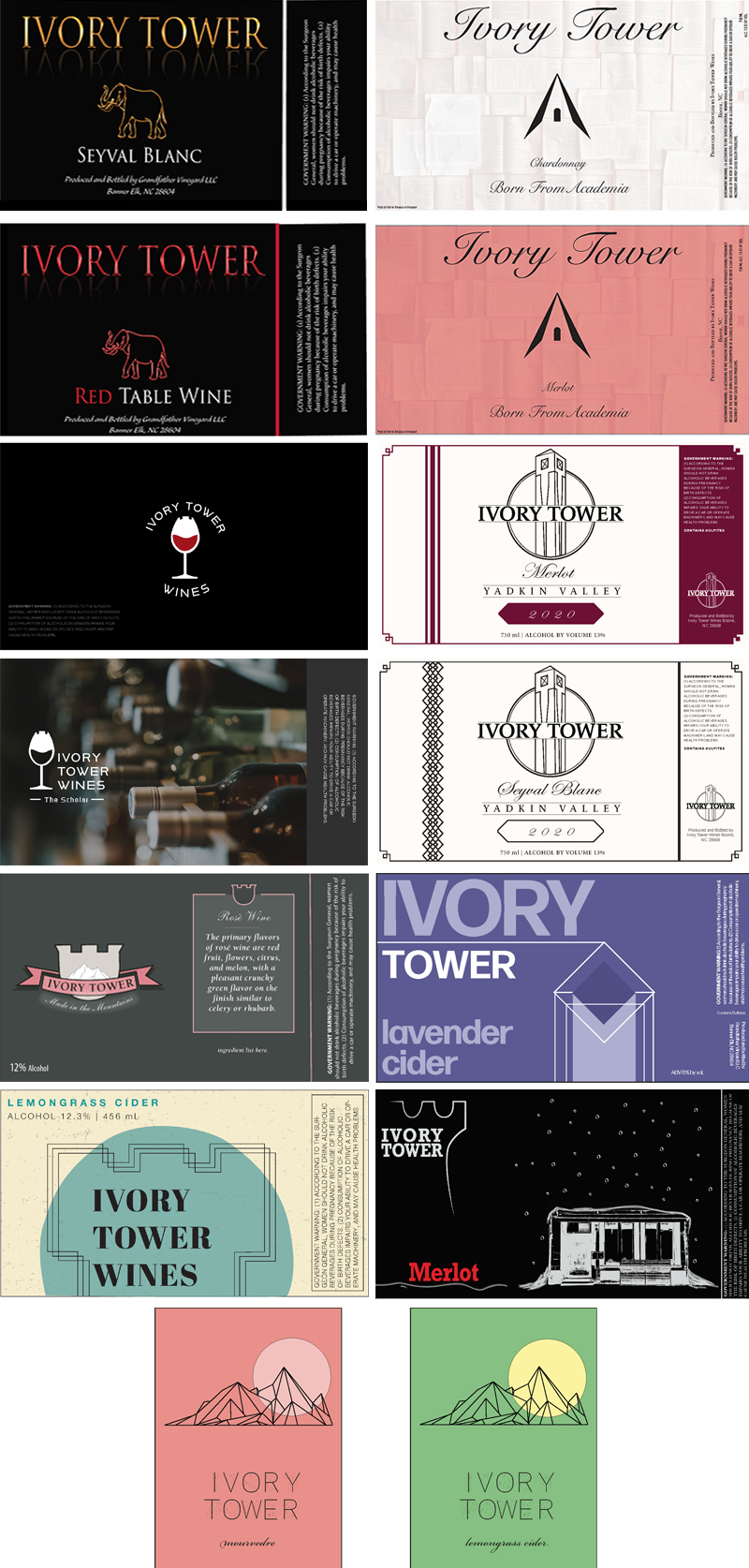PHASE 2
DIGITAL CREATION & INITIAL LAYOUT
During the second week, students worked on digital creation of their logo concepts and worked towards placing the logos into digital compositions, combined with required text and content. I discussed logo design further, introducing personal examples and logo games.
Students were taught how to:
Recognize what makes a successful logo by identifying well-known logos using a simple logo identification game, “Name that Logo,” that I created
Recognize what makes a successful logo by identifying well-known logos by using a Logo Design Quiz
Show personal examples of logo and identity system designs and recognize their use in various contexts
Introduce raster images and define resolution and PPI (pixels per inch)
Demonstrate how to format an image in Adobe Photoshop for the print process
Explain the difference between vector graphics and raster images
Introduce stock photo resources and demonstrate how to download and place them into design layouts as well as how to include appropriate image attributions
Complete the Adobe InDesign textbook tutorial assignment in Against the Clock demonstrating how to place and format an Illustrator logo, Photoshop images, and how to format text into the layout
Demonstrate how to convert text to outlines in Adobe InDesign
Discuss current logo trends by introducing the latest Gucci rebranded logo
The initial design for the Wine Branding Label project was due the following week, and students in both course sections submitted their comps for review. Learning assessment was evaluated in the form of an online quiz. The quiz assessed learning objectives related to their understanding of typography and of the InDesign user interface. I downloaded student wine label files and combined them into a single PDF file for each class. I then uploaded the files into a shared Google drive to present to GCM program director, George Glisan and Wine Specialist, Louis Conradie. I printed the design comps on a Ricoh 5300 Laserjet Printer.
After discussing the initial comps with Dr. Glisan, I contacted students who needed to make minor adjustments, such as spelling corrections or size formatting, before submitting the files to the department of Fermentation Sciences. After students resubmitted their corrected files, I compiled them into a new PDF file for each class and resubmitted them to Dr. Glisan. I graded the student wine label design comps. Dr. Glisan then submitted the student wine label comps to Louis Conradie at the department of Fermentation Sciences. After receiving their initial grades and feedback for their design comps, I received some student corrections for their wine label layouts. Dr. Glisan met with the Flexoprinter to discuss the printing of the labels.
The student comps can be found here. See some comps to the right or below.
